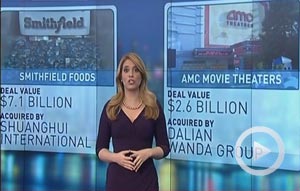Approach brings people back to farms
Updated: 2013-07-14 09:30
By Sun Ye (China Daily)
|
||||||||
Farmers supported by their communities may be the answer to China's concern over food safety, efficient land use and the unbalanced distribution of rural-urban demographics. Sun Ye goes out into the countryside to find out if this model will work for the country.
The physical manifestation of the trend is a box of vegetables that appears on the doorstep every week, filled with seasonal produce with an occasional wormhole, but is still warmly welcomed. It is also the chance to meet and get to know the farmer who supplies the box, and the opportunity to bring the children down to the farm to take part in the sowing and the harvesting.
It is the building of a community, one that is prepared to pay a premium up ahead for the assurance that vegetables on the table are grown according to safe practices, are sustainable, seasonal and as far as possible, free from an overload of pesticides. It is a chance to meet and meld with other members of the community who have the same passion and beliefs.
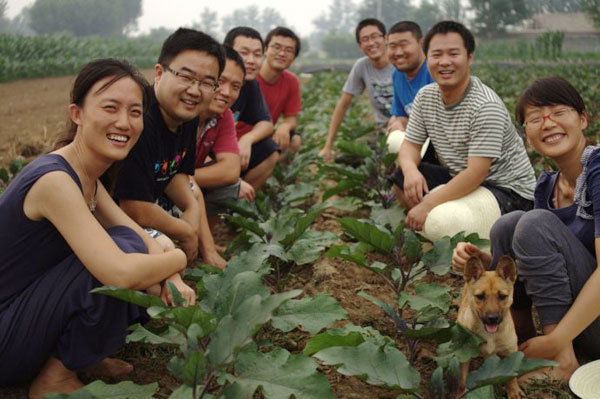 |
|
Shi Yan (left) and her team of more than 20 co-workers live and work at Mafang village in suburban Beijing for the CSA cause. Photo provided to China Daily |
This is what community-supported agriculture (CSA) looks like in China, for now. But looking beyond the summer tomatoes and winter cabbages that are purchased even before they are sown, CSA is a new concept that goes against the traditional, or is a return to old systems - depending on how you look at it.
More importantly, it is a trend triggered by rampant food-safety problems thrown up in attempts to adequately feed a growing country of 1.35 billion. Huge waves of urban migration are yet another problem as the younger generations abandon the hard and thankless efforts of cultivation in their villages and head out to the bright lights.
CSA encourages young farmers to go back to the land, and offers them a business model that gives them insurance against fluctuating prices brought on by inclement weather, unpredictable harvests and natural disasters.
CSA involves the communities around the farms, and is a model that has worked with varying success in North America, Australia and New Zealand.
In China, CSA is only at its juvenile stages, and it may grow up to be a very different child.
Shared Harvest in suburban Beijing takes its name from a CSA guidebook. It has also become living proof for this farming model since its inception in mid-2012. It is a cooperative that supplies more than 400 members with weekly boxes of green vegetables - all of which have been paid for upfront.
This new initiative has also helped its farmers, by educating them on agricultural methods that are sustainable, with an emphasis on the long-term rather than short-term bounties.
For example, the farmers would probably not have given up the use of pesticides on their own.
"It's simply scary," says Liu Xiancang, the director of the Liu village co-op that's responsible for supplying the vegetables that get sent out to Shared Harvest members.
"We didn't realize how harmful chemicals could be until Dr Shi told us in a lecture early this year. We live and depend on the land. It's our mother. But we are doing so much harm to her."
"Dr Shi" is Shi Yan, the main motivator of Shared Harvest, and no stranger to the green and sustainable agriculture movement.
"We feel we are doing a great, great charity for our sons and grandsons," Liu continues. "It's really not about the money."
The village had long ceased making money from its farms and most of the villagers had already gone to the city to find work. CSA is calling them back.
"It's slow and the harvests are comparatively small, and it's more expensive," but Liu says that the village now sees hope on the horizon. In June, the income from paid subscriptions rose to about 50,000 yuan ($8,150), with vegetables from the 5.33 hectares of land selling for 15 yuan per kilogram.
"It means that our farmers get a paycheck that is even better than working in the city," Liu says. More than 10 villagers are now back working on the farms.
"The more people stay back, the more prosperous the local community will be," Shi muses.
Paid subscriptions help shield the farmers from instability and risks.
In spring, there was an outbreak of aphids on the Shared Harvest farms. Soapy water and pepper spray were not enough to kill the bugs, which have become susceptible only to pesticides. Leaf vegetables across the farms were all but wasted.
"We can only make up to the consumers with other options, explain our plights, try harder and wait for recovery," Shi says. If the farms had had no support from Shared Harvest members, they would have a hard time weathering such disasters.
Diversity also helps, and the farmers strike a balance by sectioning up the land and growing different produce, so that "one can make up for the shortage of another."
Laura Johnson Hill, a mother of four, looks forward to the "surprise" mixture every week so long as her family enjoys the food.
"It makes you more creative," she says. "And if you can just smell the tomato, you'll know the difference."
"No need to worry about hormones, genetic modifications or herbicide." Yolanda, a mother-to-be says of her share of the harvests. "You don't even need to peel the vegetables. It's just like when we were young."
"The bottom-line is, organic food tastes good," says Kazuyoshi Fujita, head of Daichi wo Mamorukai (the Association to Preserve the Earth), who started the CSA concept in Japan in mid-1970s. "Consumers would finally vote for that which tastes good. So stop judging by the looks, but go for taste and safety standards."
"CSA may provide what urbanites need," says Wu Wenliang, dean of the school of resources and environment sciences at the China Agricultural University.
"You can trust it because you can always find the producer or farmer and voice any concern. When a farmer is paid in advance, he takes care about the quality. When consumers commit to a membership, there is trust."
Wu expects the model to slowly gather momentum, but admits that it is now mainly supported by those who are able to pay a premium for their vegetables.
Shi also harbors the hope that CSA will take off.
"My statistics from experiences show that every five new members will cleanse one mu (666 square meters) of land, and 1,000 members could very well support an entire rural community," she says.
"I believe CSA will bridge the city and the countryside, so that consumers are more invested and share the risks as well as the rewards of farming, while farmers have a bigger incentive to keep the environment functioning properly."
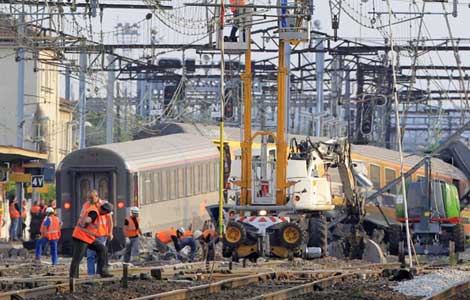
 French train derailment kills six: media
French train derailment kills six: media
 Chinese female sailors at China-Russia sea drills
Chinese female sailors at China-Russia sea drills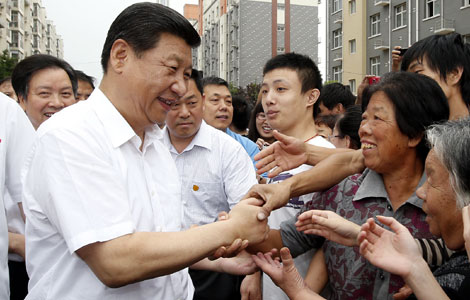
 Xi urges CPC members to keep China red
Xi urges CPC members to keep China red
 China maintains top-level alert for Typhoon Soulik
China maintains top-level alert for Typhoon Soulik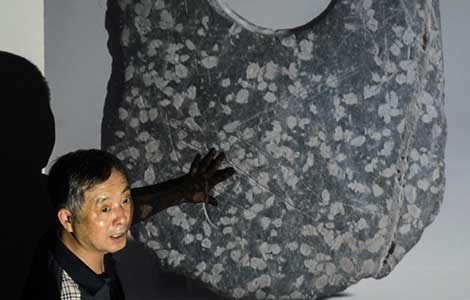
 Inscriptions may predate oracle bones
Inscriptions may predate oracle bones
 Coca-Cola seeks to connect with young customers
Coca-Cola seeks to connect with young customers
 Residents flee from landslides
Residents flee from landslides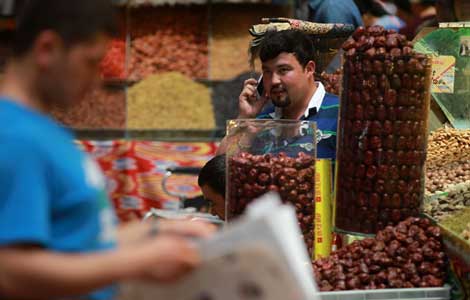
 Tourists say they aren't afraid to travel in Xinjiang
Tourists say they aren't afraid to travel in Xinjiang
Most Viewed
Editor's Picks
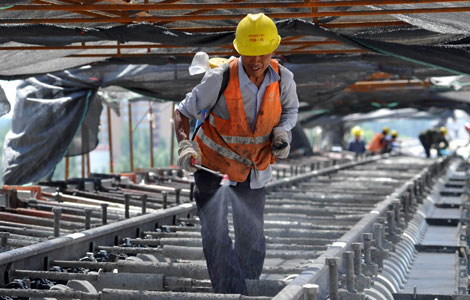
|

|

|

|
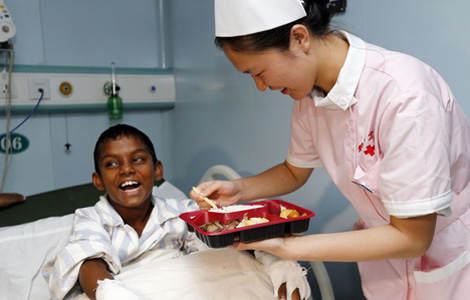
|

|
Today's Top News
Former S.A President confident of Mandela
US seeking direct nuke talks with Iran
DPRK blames ROK for aborted talks
Death toll rises to 43 in SW China landslide
French train derailment kills six
7 peacekeepers killed in Darfur
3rd Chinese girl dies in Asiana crash
Moscow pileup kills 12, injures at least 19
US Weekly

|

|

